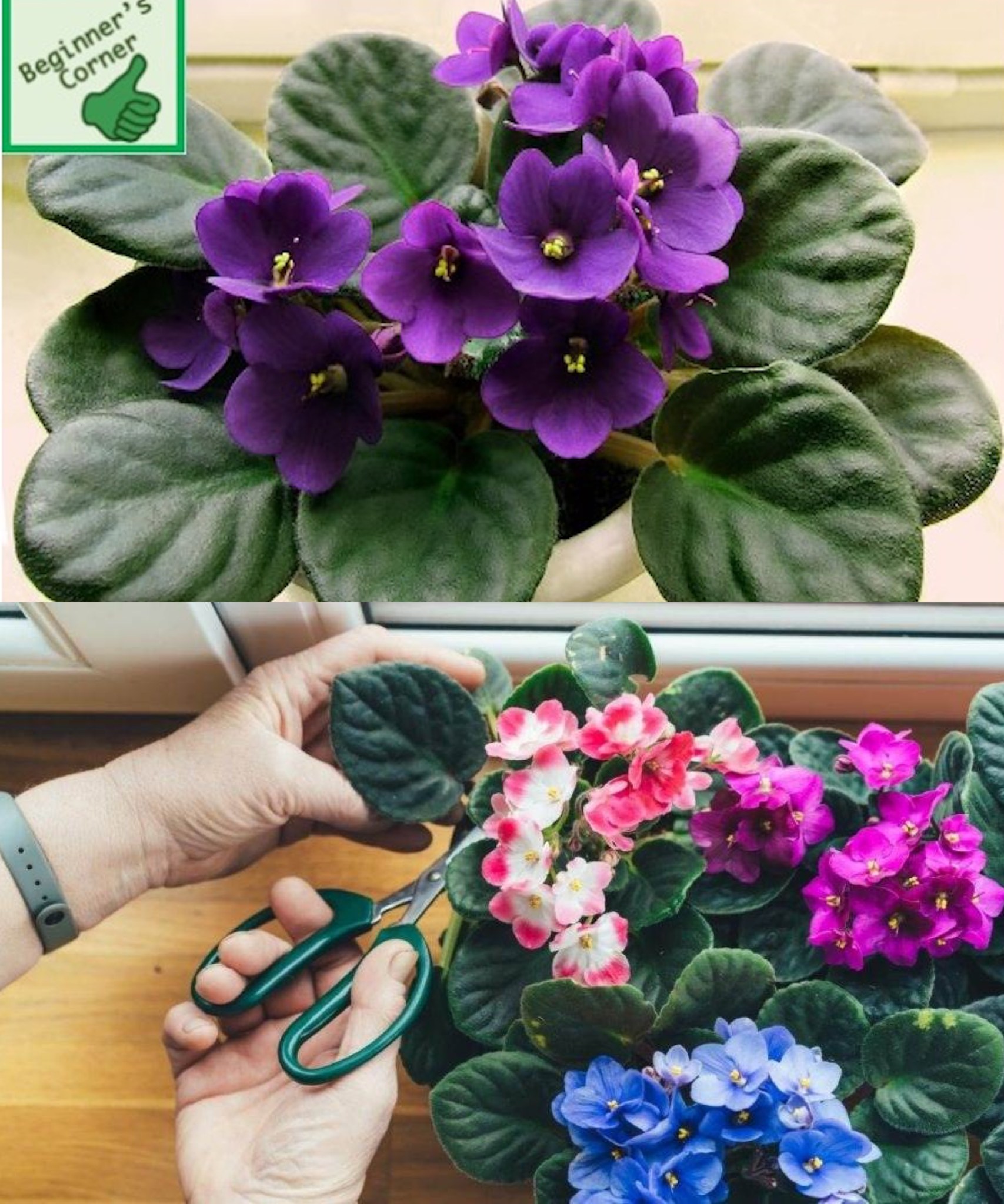
10 Tips To Keep Your African Violet Bloom All Year Round🌱
African violets (Saintpaulia spp.) are cherished for their vibrant flowers and lush foliage. To keep these beautiful plants in bloom throughout the year, follow these ten essential tips.
1. Provide Adequate Light
- Indirect Light: African violets thrive in bright, indirect light. Place them near a north or east-facing window where they receive filtered sunlight. Avoid direct sunlight, which can scorch their leaves.
- Grow Lights: If natural light is insufficient, use fluorescent grow lights to supplement their light needs. Position the lights 6-12 inches above the plant.
2. Maintain Proper Temperature
- Ideal Range: Keep temperatures between 65-75°F (18-24°C) during the day and slightly cooler at night. Avoid temperatures below 60°F (15°C) and sudden temperature fluctuations.
- Avoid Drafts: Place your plant away from drafts, heaters, and air conditioners, which can stress the plant.
3. Use the Right Soil
- Well-Draining Mix: Use a specialized African violet potting mix or a well-draining soil blend with peat moss, perlite, and vermiculite. This mix ensures good aeration and prevents root rot.
- Repotting: Repot your African violet every 1-2 years or when it becomes root-bound, using fresh potting mix.
4. Water Properly
- Consistent Moisture: Keep the soil consistently moist but not soggy. Water when the top inch of soil feels dry. Use room-temperature water to avoid shocking the plant.
- Avoid Wet Leaves: Water the plant from the bottom or use a saucer to catch excess water. Avoid getting water on the leaves, which can cause spotting and decay.
5. Feed Regularly
- Balanced Fertilizer: Use a balanced, water-soluble fertilizer specifically formulated for African violets. Feed every 4-6 weeks during the growing season (spring and summer) and reduce feeding during the fall and winter.
- Follow Instructions: Follow the manufacturer’s instructions to avoid over-fertilizing, which can harm the plant.
6. Maintain Humidity
- Optimal Humidity: African violets prefer higher humidity levels. Increase humidity by placing a humidity tray or pebble tray under the plant or using a humidifier.
- Avoid Misting: Misting the leaves can lead to fungal issues. Instead, focus on maintaining ambient humidity.
7. Prune Regularly
- Remove Dead Flowers: Pinch off spent blooms and dead leaves to encourage new growth and keep the plant looking tidy.
- Trim Leggy Growth: Prune any leggy or overgrown stems to maintain the plant’s shape and promote a fuller appearance.
8. Provide Good Air Circulation
- Ventilation: Ensure good air circulation around the plant to prevent fungal diseases and promote healthy growth. Avoid overcrowding multiple plants together.
- Avoid Fans: Direct airflow from fans can cause leaf damage. Instead, use gentle air circulation methods if needed.
9. Control Pests and Diseases
- Inspect Regularly: Check your plant regularly for pests like aphids, spider mites, and mealybugs. Treat infestations with insecticidal soap or neem oil as needed.
- Fungal Diseases: Avoid overhead watering and maintain proper air circulation to reduce the risk of fungal infections.
10. Adjust Care with Seasons
- Winter Care: In winter, reduce watering frequency and avoid fertilizing. Place the plant in a location with stable temperatures and adequate light.
- Summer Care: Increase watering and feeding during the growing season. Ensure the plant receives plenty of light and maintain humidity.
Final Thoughts
By following these ten tips—providing adequate light, maintaining proper temperature and humidity, using the right soil and watering techniques, feeding regularly, and managing pests and diseases—you can keep your African violet blooming beautifully throughout the year. Enjoy the vibrant colors and delicate blooms of this delightful houseplant with consistent care and attention.
